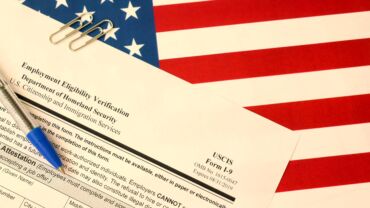Requirements Related to Surprise Billing: Final Rules, 26 CFR Part 54; 29 CFR Parts 2510 and 2590; 45 CFR Part 149, 87 Fed. Reg. __ (Aug. 26, 2022); DOL Fact Sheet: Requirements Related to Surprise Billing: Final Rules (Aug. 19, 2022)
The DOL, HHS, and IRS have finalized portions of the surprise medical billing regulations covering the independent dispute resolution (IDR) process. (Simultaneously, the agencies released FAQs (Part 55), which address a variety of surprise billing issues, including some related to the IDR process (see our Checkpoint article).) As background, the No Surprises Act, enacted as part of the Consolidated Appropriations Act, 2021 (CAA), expanded patient protections to shield individuals from surprise bills for certain out-of-network emergency and non-emergency services, including certain air ambulance services. The agencies jointly issued two sets of interim final regulations addressing, among other things, participant cost-sharing for services subject to the CAA, in most situations using the qualifying payment amount (QPA), which is based on the plan’s median in-network rate (see our Checkpoint article). The regulations also address procedural aspects of plan payments of the out-of-network rate to nonparticipating providers and explain the role of certified IDR entities, the parties’ submission of proposed payment amounts, and factors certified IDR entities may consider in selecting a party’s payment amount (see our Checkpoint article). A federal trial court invalidated portions of the regulations that prioritized the QPA over other factors in determining the payment amount for out-of-network emergency and non-emergency services (see our Checkpoint article) and for out-of-network air ambulance services (see our Checkpoint article). Here are highlights of the final regulations:
-
IDR Payment Determinations. The final rules remove the provisions that the court invalidated and specify that certified IDR entities should select the offer that best represents the value of the item or service under dispute after considering the QPA and all permissible information submitted by the parties. While the QPA must be considered, there is no presumption that it is the appropriate out-of-network rate.
-
Disclosures for Downcoded Items. Expanding on the requirement that health plans and insurers disclose to providers and facilities the QPA for items or services with each initial payment or notice of denial of payment, the final regulations add new disclosure requirements for plans and insurers that “downcode” a billed claim. Downcoding is defined as the alteration by a plan or insurer of a service code to another service code, or the alteration, addition, or removal of a modifier, if the changed code or modifier is associated with a lower QPA than the code or modifier billed by the provider or facility. Responding to comments that additional information would be useful when the QPA is based on a downcoded service code or modifier, the final regulations require the plan or insurer to provide an explanation of why an item was downcoded, including a description of which codes or modifiers were altered and what the QPA would have been without the downcoding.
EBIA Comment: These final regulations are narrow in scope, addressing only certain issues critical to the implementation of the IDR process. The agencies note that they intend to finalize the remaining provisions of the current interim final regulations “at a later date.” HHS’s IDR process guide for certified IDR entities has been updated to reflect the changes required by the court cases. And, separately, the DOL has issued an IDR implementation status update. For more information, see EBIA’s Health Care Reform manual at Sections XII.B.3 (“Surprise Medical Billing: Emergency and Non-Emergency Services”) and XII.B.4 (“Surprise Air Ambulance Billing”) and EBIA’s Group Health Plan Mandates manual at Section XIII.B (“Patient Protections”). See also EBIA’s Self-Insured Health Plans manual at Section XIII.C (“Federally Mandated Benefits”).
Contributing Editors: EBIA Staff.






